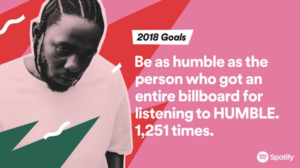Inclusive Marketing For A Diverse Audience: Best Practices And Strategies

Lingerie company ThirdLove’s consistent promotion of body diversity. Microsoft’s ‘We All Win’ Super Bowl ad. In the world of marketing, there’s definitely no shying away from diversity and inclusion (D&I) campaigns. They’re everywhere – and rightfully so.
But are brands practising what they preach? And how are they navigating such sensitive topics within their overall marketing strategies?
Fundamentally, D&I isn’t just a box-ticking exercise. From understanding cultures and personal celebrations to providing opt-out options and adapting brand messaging, you need to genuinely know where people are coming from and make meaningful connections.
So, let us walk you through how best to navigate inclusivity in your marketing as you embrace diversity and foster a sense of belonging among your audience.
Understanding inclusivity in marketing and recognising diverse celebrations
Marketing has a powerful role in shaping perceptions and influencing behaviours. Marketers therefore have a responsibility to make everyone feel heard and listened to through content that resonates with different cultures and communities. This starts with understanding every member of your audience, before thinking about the things that matter most to them and tailoring your campaigns appropriately.
An obvious example is that some religions don’t celebrate Christmas. So, you may want to think twice before sending that festive e-shot to all – and instead consider segmenting your email lists to serve different people different content catered to holidays that they do celebrate. After all, you don’t want to appear to only be marking a certain culture’s holidays if you’re claiming to be an ‘inclusive brand’.
Equally, these campaigns should be authentic. Don’t just produce a campaign for the sake of it – make sure there’s a genuine focus and connection to be fostered. Jumping on the bandwagon without the right intentions can have the opposite effect.
Tailoring messages, visuals, language and tone
The language and imagery used within your marketing (even your use of emojis 👀) can also have a huge impact on how it’s received. So, making sure your content’s tone and language is sensitive to both cultures and different perspectives is a high priority if you want to be a trusted, inclusive brand.
Here are a few things to consider when crafting campaigns:
- Be mindful of language nuances – Certain phrases or expressions could have different meanings across various cultures, making localisation key
- Steer clear of stereotypes – Avoid using stereotypes or clichés as they could reinforce negative perceptions or inadvertently perpetuate bias
- Use gender-neutral language – By opting for this where possible, your content can be more relevant to all readers
In terms of visuals, they should be representative of various cultures, age groups and genders but should clearly go beyond tokenism. What do we mean by this? Any images should be a fair representation of the society we live in and the audience you’re looking to connect with. You’ll also want to bear in mind that point about avoiding stereotypes.
Case studies, best practices and measuring impact
While there isn’t a one-size-fits-all answer to considerate marketing practices, there are some questions you can ask yourself to check you’re on the right track:
- Are we being consistent?
- Are we being transparent?
- Have we considered the context?
- Have we ensured fair representation?
- Have we conducted thorough market research?
- Have we collaborated with diverse stakeholders?
We know it’s all well and good to talk the talk, but which brands are walking the walk? Let’s take a look at those that are embracing diversity in action…
Towards the end of the year, Google provides a round-up of the major events, trends and moments from the past 12 months. It calls this the ‘Year In Search’. By showcasing diverse stories and experiences, Google highlights the importance of empathy and understanding in a multicultural world. You can go as far back as 2010 to look at how the brand sensitively showcases each event.
Spotify
Music streaming service Spotify nailed their 2018 out-of-home campaign, with this holiday ad that wasn’t so much focused on the festive season but on music listeners’ data throughout the year. It offered a positive spin on looking to the future too, with the brand doing its best to not sound tone deaf during the Christmas season.

Urban Decay
On World Down’s Syndrome Day, beauty brand Urban Decay shared a video on Instagram of Grace Key, an entrepreneur, actor, makeup artist, clothing brand founder and philanthropist. The aim was to highlight and showcase a ‘new’ face of beauty, especially in a world where people with the condition lack representation.
View this post on Instagram
All these campaigns show different ways of embracing diversity. But if you want yours to offer genuine inclusivity, then you need to find a way to measure their impact – particularly if you’re throwing some spend behind them.
Just like you’d conduct market research before a campaign, ask what your audience thinks after one. Depending on the format, you may also be able to measure conversion metrics or other common marketing KPIs. Both sources of feedback will be crucial to continuously improve your inclusive marketing strategies and make data-driven decisions.
Embrace diversity with your marketing strategy
Eager to build stronger connections and a more authentic relationship with your audience? MYC can help you evaluate and overhaul your current marketing practices, implementing inclusive strategies that foster a meaningful brand-consumer relationship.
Ready to start a conversation? Let’s talk.




